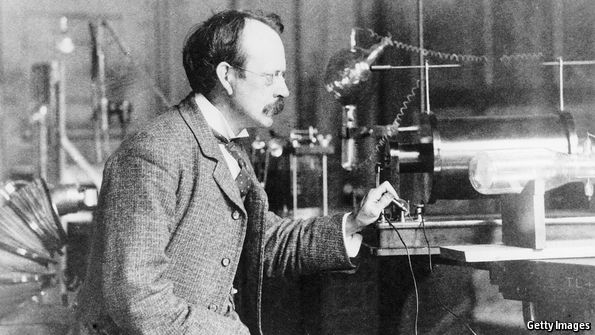Searching for particles on a benchtop

THE beams of protons that circulate around the 27km-circumference ring of the Large Hadron Collider (LHC), the world’s biggest particle accelerator, carry as much kinetic energy as an American aircraft-carrier sailing at just under six knots. Andrew Geraci’s equipment, on the other hand, comprises a glass bead 300 billionths of a metre across, held in a lattice of laser light inside an airless chamber. The power it consumes would run a few old-fashioned light bulbs. Like researchers at the LHC, Dr Geraci and his team at the University of Nevada, in Reno, hope to find things unexplained by established theories such as the Standard Model of particle physics and Newton’s law of gravity. Whereas the LHC cost around SFr4.6bn ($5bn) to build, however, Dr Geraci’s set-up cost a mere $300,000 and fits on a table about a metre wide and three long.
A century ago these were the normal dimensions for experiments in fundamental physics. The electron, the proton and the neutron were all found using kit this size. (J.J. Thompson and his electron-discovery device are pictured above.) But digging deeper into theories of reality requires more energy, and thus bigger…Continue reading
Source: Economist




